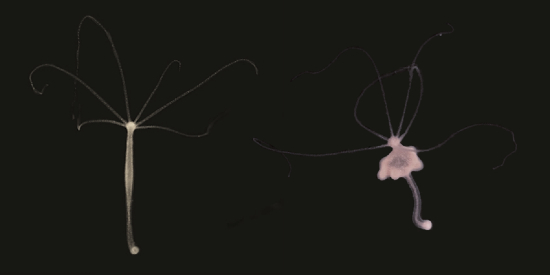Deakin researchers discover tumours inherited by generations of jellyfish-like creatures
Media release
Researchers from the CANECEV laboratory, an international collaboration between Deakin University and the University of Montpellier, have observed for the first time the birth of transmissible tumours in freshwater brown hydras - tiny, jellyfish-like creatures.
Brown hydras are microscopic organisms found in ponds, rivers and lakes, measuring about 25mm in length.
This study, 'De novo evolution of transmissible tumours in hydra', is published in the Proceedings of the Royal Society.
Dr Antoine M. Dujon from Deakin's School of Life and Environmental Sciences said the research team discovered that these jellyfish-like creatures developed tumours when being raised in the lab, both in Australia and France.
He also said the tumours can be transmitted to their young.
'This discovery shines a light on a rare form of cancer that travels from hydra parent to child, much like a family heirloom - except in this case, it's a transmissible tumour,' said Dr Dujon.
'This study aimed to see how these tumours emerged in a "patient zero" hydra and how they were passed down through generations, to provide fresh insights into how transmissible cancers spread.'
Here's what the team discovered:
- Brown hydras in the lab often grow transmissible tumours. These tumours make hydras less effective at reproducing and shorten their lifespan.
- Not all tumours are created equal; some spread like wildfire while others fizzle out.
- Surprisingly, the tumours don't seem to be linked to any special bacteria or microbes in the hydras.
Dr Dujon highlighted that the impact of this research goes beyond just hydras and could also inform our understanding for endangered Australian animals with high rates of cancer.
'By learning how transmissible cancers form and spread in these tiny creatures, we can better understand and manage similar cancers in other species.
This is especially important for animals like the Tasmanian devil, where over 80% of the population has been devastated by such diseases.
Gaining these insights could help us develop better ways to prevent and handle these serious cancers in different species and ecosystems.'
Image: Healthy hydra on the left, tumoral hydra on the right.

